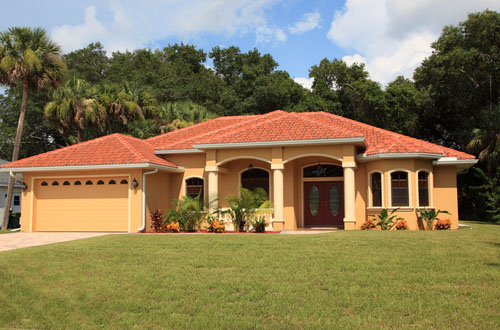Homeowners in search of relief from rising insurance bills are offering to pay more out of pocket in the event of fire, theft or other damage to their property.
In practice, consumers are doing this by raising their deductible. A deductible is the amount paid by a policyholder before insurance kicks in. Higher deductibles generally mean lower premiums, but it is risky.
While the standard home-insurance deductible typically ranges from $500 to $1,000, according to an analysis of millions of policies by digital insurance marketplace Matic Insurance, more homeowners are choosing higher deductibles. The number of new policies with $2,000 to $2,500 deductibles nearly tripled from 2019 to August of this year. The number of policies with $500 deductibles fell by about two-thirds during that time.
The decision to increase their deductible comes as the national average for home-insurance premiums based on $250,000 in dwelling coverage increased this year to $1,428 annually, up 20% from 2022, according to Bankrate.
Boosting their deductible is one of the few strategies homeowners can use to reduce their premiums and keep their home insured as inflation continues to put pressure on their budgets. Even shopping around has a limited benefit since rising construction costs and natural disasters are leading nearly all insurers to raise their prices and cover less.
“Homeowners are desperately looking for ways to save on their premiums right now,” said John Costello, former chairman of the Independent Insurance Agents and Brokers of America, a national trade association.
Scott and Cindi Fromm’s home-insurance premium rose to $2,700 from $1,600 a year. The Bella Vista, Ark., retirees hadn’t made any claims on their policy with a $5,000 deductible, but their insurer said roof damage in the area from hail was pushing premiums higher.
The Fromms switched their home-insurance policy to a new carrier, with a $10,000 annual deductible and a $1,100 yearly premium. They said they have enough savings should they have to foot the bill for $10,000 of damage before their insurance starts to cover repairs.
“We think in the long run, the high-deductible strategy will pay off for us, especially as we invest the savings,” Scott said.
Raising your deductible to $1,000 from $500 might decrease the cost of your homeowner’s insurance by 6%, on average, according to a recent analysis by insurance-research site ValuePenguin.com.
Some homeowners are choosing to increase their deductibles unprompted, while others are being effectively nudged by their insurance companies to consider the higher-deductible policies, say homeowners and insurance companies.
More people have dropped their coverage entirely. As of June of this year, 88% of owners carry homeowner insurance nationally, down from 95% in 2016, according to the Insurance Information Institute, also known as Triple-I.
How much you save on home insurance by increasing the deductible depends on your insurance company, where you live and claims history, said Loretta Worters, a spokeswoman at Triple-I. While high deductibles can help lower costs, your premiums may still rise, she said.
Understand your deductibles
Standard homeowners insurance covers wind and hail damage from storms and hurricanes. Flood and earthquake policies are typically purchased separately.
But each of these natural disasters has its own deductible rules. If you live in an area with a high risk for one of these disasters, there are different deductibles, said Worters at Triple-I.
For instance, whether a hurricane deductible applies to a claim depends on the specific “trigger” selected by the insurance company. These triggers vary by state and insurer and usually apply when the National Weather Service or National Hurricane Center officially names a tropical storm, declares a hurricane watch or warning, or defines a hurricane’s intensity in terms of wind speed, said Worters.
Hurricane deductibles are generally higher than traditional dollar deductibles and usually take the form of a percentage of the policy limits. For example, in Florida, most insurance policies have a hurricane deductible of 2% to 10% of a home’s insured value.
Homeowners are typically able to raise their standard homeowners deductible, but they don’t always have that option with a percentage deductible, Worters said.
Homeowners can find their deductible amounts on their insurance policy’s declaration page.
Consider the risks
With severe weather and natural disasters on the rise, it is risky to raise your deductible if your home might be vulnerable to damage, said Pat Howard, property and casualty insurance specialist at Policygenius, an online insurance broker.
If you live in an area where the chance of expensive home damage is low and you haven’t had to file a claim in the past, it might be worth boosting your deductible to lower your premiums, said Howard.
Prepare for the upfront expense
A higher-deductible option can help you save on monthly premiums, but make sure you can afford to pay for damage before your insurance starts to cover repairs.
For example, if you have a $5,000 deductible and your home gets $4,500 in hail damage, you will have to pay for the repairs out of pocket.
Many losses, including post-hurricane roof damage, often won’t rise to a level above the deductible, which means the homeowner will need to absorb the entire cost of the repair, said Harold Lewis, a real-estate lawyer in Miami.
You will want to be able to pay for the repairs without running up high-interest credit-card debt, financial advisers say.
Consider saving more than the deductible amount in an emergency fund, said Noah Schwartz, a financial planner in Newtown, Conn.













